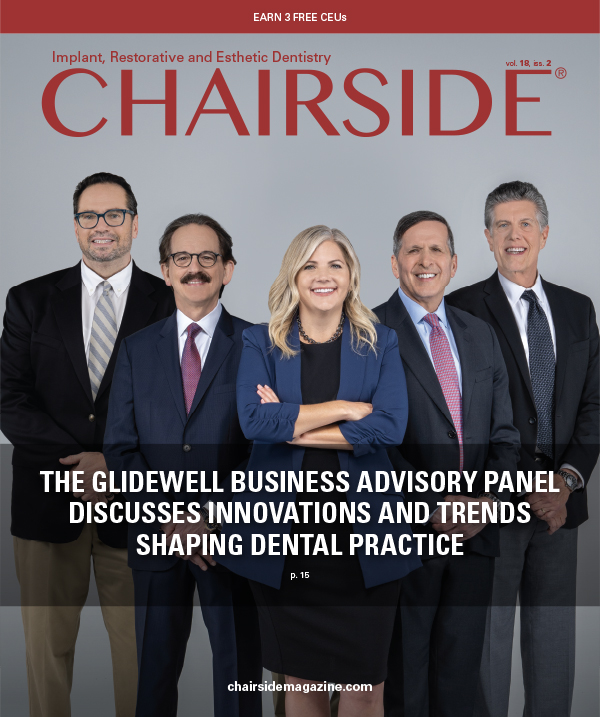How to Choose the Right Nightguard for Your Patients

There are two critical pieces of information every dentist needs to know about nightguards: when to prescribe one and which one to prescribe.
WHEN TO PRESCRIBE A NIGHTGUARD
Gather information from the patient
When speaking to patients about nightguards, don’t ask them if they grind or clench their teeth. Instead, ask them “Are you aware that you grind or clench your teeth?” This subtle shift in the discussion gives the patient an opportunity to consider the possibility that they may grind or clench their teeth.
You can then show them any evidence you see, like chipped teeth, broken restorations or a scalloped tongue. You can also ask your patients if they are aware that they snore or experience tension-type headaches. Dental sleep medicine devices and migraine prevention devices can be prescribed provisionally for patients interested in addressing these concerns. Patients with conditions like obstructive sleep apnea (OSA), snoring, headaches or migraines may respond more positively to a specialty nightguard like the Silent Nite® Sleep Appliance or the NTI OmniSplint® migraine prevention device, which are both available from Glidewell.
Cases where a nightguard is needed
Generally, if a patient has teeth, and they want to keep those teeth for as long as possible, the patient could benefit from a nightguard.
Considering the average patient’s teeth are only in contact for 1.3 minutes while asleep,1 how can we justify the need for overnight coverage with a nightguard? The justification is bruxers, or those who grind and clench their teeth for more than 1.3 minutes every night. For them, protection is crucial. The important thing to remember about nightguards is they don’t treat bruxism. They merely minimize the harmful effects. Nightguards give patients a surface to grind on that isn’t their teeth or restorations.
POTENTIAL HARMFUL EFFECTS OF BRUXISM |
|---|
| Chipped or flattened teeth |
| Broken dental restorations |
| Headaches |
Cases where a nightguard is not needed
Although limited, there are some indications that would not support a traditional nightguard. These indications include patients who have:
- Few to no teeth
- Primary teeth that will fall out
- Medical conditions that may require a specialty nightguard
It’s also important to consider on which arch to place a bite splint. For example, upper nightguards can worsen symptoms of sleep apnea. Consider any medical conditions your patient might have before prescribing a nightguard.
WHICH NIGHTGUARD TO PRESCRIBE
Two nightguards that I frequently prescribe in my practice and recommend are the Comfort H/S™ Bite Splint and the Comfort3D™ Bite Splint (available from Glidewell).
Comfort H/S™ Bite Splint
The Comfort H/S Bite Splint is one of the most widely prescribed bite splints for a very simple reason: It offers the benefits of both hard and soft nightguards.
It is designed with a soft polyurethane inner layer and a hard copolyester outer layer. The outer layer protects the teeth against the forces of bruxism, while the soft liner provides optimal comfort. Patients love this nightguard for the “cushiony” feel it has over the teeth. In fact, this is my go-to appliance for standard nightguard cases. The Comfort H/S Bite Splint is a good choice, particularly for patients that present with crooked teeth, significant undercuts or too much retention.
Comfort3D™ Bite Splint
The Comfort3D Bite Splint is a newer nightguard from Glidewell that is entirely 3D printed. It is advantageous for dentists using an all-digital workflow. Because it is 3D printed, the appliance offers a very precise fit. Although a digital workflow is recommended, dentists can still send in a traditional impression for a Comfort3D Bite Splint, and the lab will scan it and 3D print the appliance from that scan.
The Comfort3D Bite Splint is fabricated from biocompatible light-cured resin. The thin, flexible material is designed to remain the same thickness throughout the entire device, ensuring maximum comfort. Because the material is thin, patients with extreme cases of bruxism may wear through their appliance faster than the average patient.
The Glidewell family of occlusal appliances is inexpensive, so I always recommend dentists try each appliance for themselves. That way, they can more confidently prescribe the right kind for their patients.
CONCLUSION
There are hundreds of nightguards available for dentists to choose from, including additional appliances designed for dental sleep medicine or migraine prevention. But their main function should be the same: to protect teeth and restorations from the uncontrolled and unpredictable forces of bruxism.
Ultimately, the best nightguard for your patient is the one they will actually wear.
Reference
- ^Graf H. Bruxism. Dent Clin North Am. 1969 Jul;13(3):659-65.
NTI OmniSplint is a registered trademark of James Boyd.






